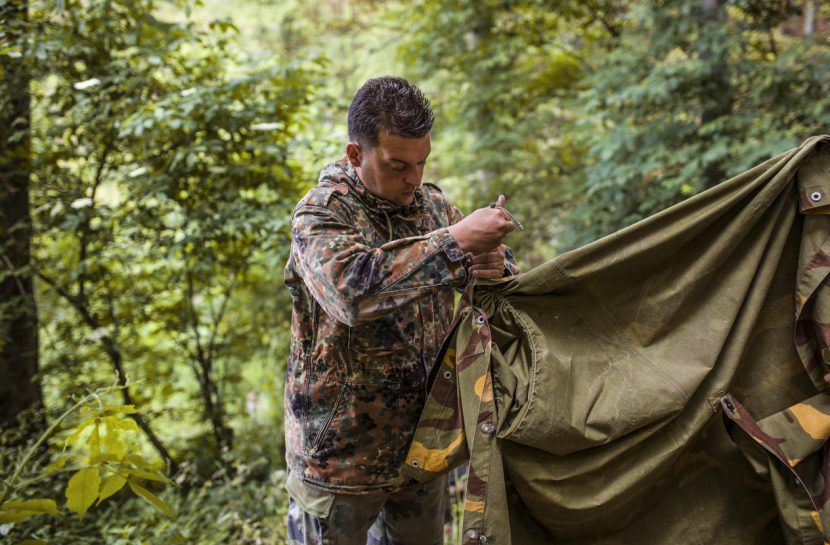A Guide to Wearing Camouflage in the Wilderness

If there’s anything that you need to know about wearing camouflage, it’s that is important to wear different camouflage in different environments.
There are obviously many reasons to wear camouflage. If you’re hunting or trying to hide out in the woods in a grid down SHTF situation, wearing camouflage is definitely a good idea because it helps you to blend in.
Still, you also want to be very strategic about the types of camo that you wear.
With that being said, let’s cover the different types of camo patterns and what they are best suited for:
GREEN MILITARY CAMO

Green military camo may be what you think about when you think about camo to begin with. There are many different variations of the green military camo scheme but basically, it’s a mix of dark green, tan, dark brown, and black. It’s designed to fit in well with most green forest and jungle environments but is a poor choice for the winter, fall, and for the desert.
WOODLAND CAMO

Woodland camo is one of the most common types of camo there is, at least when it comes to hunting camo (though there are woodland military camo uniforms as well). As the name clearly implies, it is designed to help you blend in with a forest or wooded environment.
This is also a very versatile camo scheme as it is a good choice both for the high mountains, such as in the western United States, and the more flat woodlands of the eastern United States. There are also many different types of woodland camo. Some have a greener color scheme, while others are more brown colored and are more suited to the late fall.
BRUSH CAMO

If you’re going to be in an environment that is less dense, you’ll want to go with something such as brush camo. Brush camo is designed to help you blend in against hillsides, brush, and rocks rather than trees and forests.
It’s a popular option for people who will be heading up high into the mountains or anywhere where they will be fewer trees. However, it can also be a good choice for open grasslands, prairies, and bushland territory.
MARSH CAMO

If you’re going to be heading into a swampy area, marsh camo is what you’ll want to go with. Marsh camo is designed to help you blend in against a green water backdrop, green trees, tall grass, corn stalks, and reeds. It’s a popular choice among waterfowl hunters who hunt in wetland and swampy areas.
SNOW CAMO

Snow camo will have a mostly white color scheme with tree branches and other dark colors set against it to help you blend in against a wintery forest backdrop.
That being said, it may be preferable to just wear an all-white outfit without any leaves or other colors on the design at all instead of snow camo – at least for environments that are extra white and snowy.
DESERT CAMO

Desert camo is the kind of camo that you see being worn by troops in the Middle East. It’s mostly khaki and light brown with darker brown, light green, and occasionally black splotches. Obviously, it’s designed to help you blend in against a dry and more desert-like environment. If possible, try to go with a camo scheme that will help you blend in better with the type of sand in the desert. So the lighter or darker the sand, the lighter or darker your uniform should be as well.
CONCLUSION
In conclusion, you should purchase many different camouflage uniforms and use different ones depending on the environment that you are in, based on the above suggestions.
But remember, camouflage DOES NOT make you invisible, and you shouldn’t think that donning a camouflaged outfit is going to make it impossible for you to be spotted in your environment. In fact, even if you are lying absolutely still, it is still very much possible that you can be seen.
So while camouflage can HELP you to blend in, it’s not going to make it certain that you blend in. Keep this in mind when you’re out in the elements donning your camouflaged uniform.
